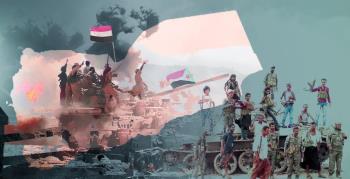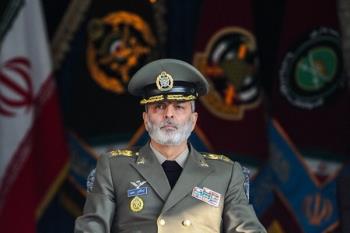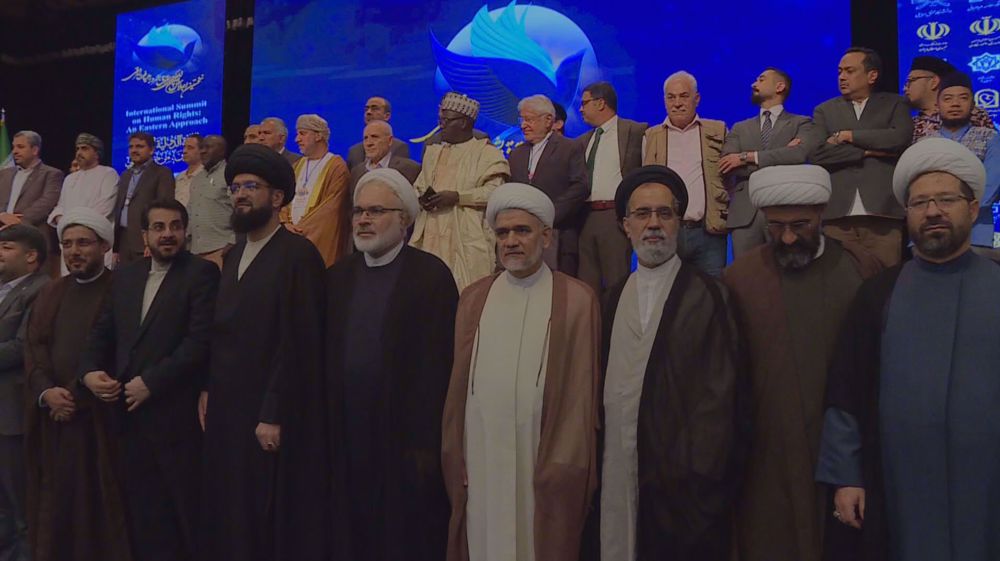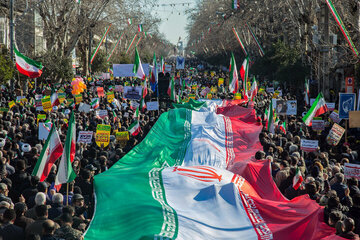Alwaght-On February 23, ISIS attacked 35 Assyrian villages in northeast Syria. The fate of more than 300 Syrian Assyrian Christians hostages is still unclear. The leaders of Assyrian tribes are reportedly negotiating for the release of all hostages. In case, the negotiations were fruitful, ISIS will release them in exchange for captured ISIS militants in the Syrian jails. Otherwise, it is possible that they will be slaughtered just like the Egyptian Coptics who were beheaded in Libya, recently. Execution is a symbolic step by the terrorist group to make their goal in its war against Christians and other minorities clear for the whole world to see .
If these - the so-called - "jihadis'" actions were to be taken seriously, then, their practice in beheading is a mere introduction for the bigger battle. This battle is based currently at the southern coasts of the Mediterranean Sea. However, ISIS threats to transfer the battle to the northern coasts of the sea, which was expressed by one of ISIS militants at the Libyan coasts, as he carried a knife in his hand pointing towards Europe, saying, "We will invade Rome ."
ISIS is calling through mosques' amplifiers, inviting to join the process of slaughtering a number of Christian Assyrians hostages. The terrorist group has executed 15 of them in Tal Tamr, in the West of Hasakah Farms, the homeland of Syrian Assyrians, according to Assyrian Associations in Germany. ISIS did not stop at creating a series of massacres against them – which rises to the standards of methodological war crimes, according to the United Nations; it has also carried out a cultural purging in Iraq by ransacking and destroying priceless artifacts in Al-Mussel Central Museum that has long defined the country. Irina Bokova, Director of the United Nations Educational, Scientific, and Cultural Organization (UNESCO) said Friday, “We cannot remain silent. The deliberate destruction of cultural heritage constitutes a war crime. I call on all political and religious leaders in the region to stand up and remind everyone that there is absolutely no political or religious justification for the destruction of humanity’s cultural heritage.” The UNESCO official's statement was as a reaction to the "bulldozing" of ancient historical city of Nimrud, Iraq – considered by archaeologists and historians as one of Mesopotamia’s greatest cities .
In last year's summer, ISIS published the fourth volume of its magazine known as "DABIQ" – the name of one of the Syrian cities, where, according to Sahih Muslim, a decisive battle between the Muslims and Christians will take place, before the end of time. The Editors of the magazine chose for the cover an image of St. Peter's Square in Rome, surmounted by the black flag of ISIS .
ISIS already expressed this religious justification for the war against Christians, when it published its founding document entitled "Informing the Believers with the Birth of the Islamic State, in 2007. The publishers cited their document based on a claimed Hadith, "Muslims must be governed by Muslims, and when three Muslims live together somewhere, they must appoint a leader among them ."
Moreover, the document states that in order to "achieve the salvation of Muslims; they must live in an area where Islamic law is being applied." In the absence of documents specifying the areas in favor of Sunni Muslims, the Islamic organization took it as an excuse to expand and control other areas, joining them with the "Caliphate State," as at the times of Islamic Conquests. To achieve this, ISIS depends on three tactical principles: "Spite," "Brutality," and "Empowerment." ISIS militants apply these principles without any doubt .
According to an Iranian American historian, Hamid Dabashi, ISIS seeks four goals through its attacks targeting Christians. First, ISIS desires to eliminate the signs and symbols of a religious and cultural coexistence in the West Asia. Second, it incites the religious groups against each other, such as the minorities, Christians, Shiites, and Yazids, in order to harm the stability within the states. Third, it prompts the Western Countries to engage in a war with ISIS – which gives it "legitimacy" as it is fighting the "Infidel West," as well as, strengthens its claim that Islam is in a state of war against the rest of the world. The Western countries tend to interpret the attacks against Christians as an attack targeting them. Finally, the attacks against religious minorities are an attempt to cover up ISIS' defeat in Kubani and its loss of this city. The militants wanted to show through their fourth goal that they are not invincible, as they want to continue to be an important issue in the Western media. From a Western point of view, a fifth point would be that terrorism against Christians contributes to fueling hostility, and that some Muslims will tend to be extremists and embrace what they call "Jihadi Thinking ."
The New York Times, in 2012, began to assert, "Syria’s pluralistic society, which once rose above sectarian identity in a region often characterized by a homicidal assertion of religious belief, is now faced with civil disintegration and ethnic cleansing." The Christian Communities of the Levant realized that what they are facing is more than a war against the Syrian Government. It is a war against Syria itself, and against the continuation of presence of the Christians and their coexistence with their fellow Muslims, "with the Zionist and U.S. governments trying to demolish with the aim of creating sectarian states that would be in a line with the so-called clash of civilizations." This will only satisfy the urge of the Zion-American thirst for power and control over the Middle Eastern region .
Syria is viewed as a "cleft nation," just as Lebanon and Bosnia; it is a merging point between supposedly different civilizations. These nations have been successful in blending different civilizations; thus, they are able to hinder a clash of civilizations "by bridging different civilizational entities." The purging of Syrian and Iraqi Christians aims to reconfigure the West Asia sociologically and politically, just like the Zionist attempts to cause the Iranian Jewish community to leave their Iranian homeland .
According to Amin Hoteit, a Strategic and Military expert, "If we consider the moves of ISIS and the reactions done by the Coalition, we would find that – superficially – ISIS is the one who is making the moves, creating the war fields, and the Coalition comes to treat the issue superficially in order to create reactions to ISIS' actions." However, this is not true. At a closer look, ISIS appears to be led by a working, supporting and training force. It is also supported by a force that creates a suitable psychological environment. For Instance, Hoteit continues, "the 2500 ISIS militants sent to Al-Mussel, could not possibly be able to achieve what they have achieved in the city. But, if we add things up, with prior preparation and media and psychological wars that hindered the confrontation, as well as operations done, we can conclude that there is an invisible force that is leading ISIS ."
The strategy now adopted by ISIS includes "Mass Genocide," as it happened previously in Sanjar and recently with the Assyrians. According to Hoteit, this is the limit for ISIS, they already know that they are finished in the region; this is why they are moving toward new minorities, such as the Assyrians. Their next strategy was the "Emotional Annihilation" expressed by the destruction of the historical artifacts in Al-Mussel .
He added that the US plan in the region has failed. This is the third American plan in controlling the region after the past two ones has failed – the Muslim Brotherhood and the Wahhabis led by Saudi Prince Bandar bin Sultan. The US is now looking for a fourth plan in its attempt to control the Middle Eastern region.



























